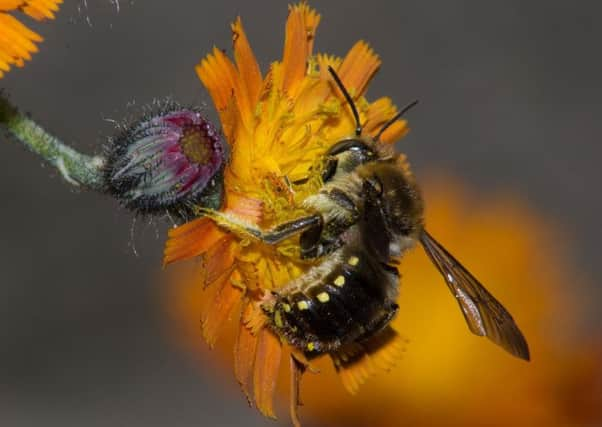Nature is desperate for any help you can provide in your garden


Gardening, once so popular though often formal, allowed many insect species to hang on and with them the small mammals and birds that depended upon them and in turn the larger mammals and birds that prey on the smaller ones.
With work pressures, competition for leisure time and ever increasing numbers of cars, gardens are being lost to hard landscaping: paving, decking and parking at an unprecedented rate. With the lost flora the associated fauna is also lost. However there is a low maintenance alternative which not only provides for nature but can reap great rewards for we nature lovers too.
Advertisement
Hide AdAdvertisement
Hide AdOn arrival our suburban rear garden was largely lawn and straight paths - boring and rather barren. I repositioned the paths into a meandering route that created scallops of varying sizes. I replaced a tumbled down fence with a natural mixed hedge. In the bigger scallops I planted flowering and fruiting shrubs at the back, perennial and annual flowering plants good for insects at the front - some cultivated, others native. There were already currant bushes now giving annual sightings of the delightful and nationally declining currant clearwing moth. I also planted honeysuckle, with its flowers for insects and berries for birds and small mammals, that has also resulted in regular sightings of the nationally scarce honeysuckle sawfly whose larvae feed on the foliage (also that of snowberry). We still have some lawn, the back one is mowed just once, late summer.
The rear garden is a bit longer than most but not huge, and of a standard width. As well as the shrubs etc, I’ve managed to squeeze in three ponds and a rockery. The ponds have frogs, toads, palmate and smooth newts as well as varied damsel and dragonflies, etc. Orange hawkweed on the rockery needs control but is so good for numerous bee species and other insects it’s worth having.
Your garden may be smaller, but any nectar and water source (even an upturned dustbin lid with a few dead leaves in the water is good - some hoverfly species breed in such), ground cover and nesting sites/cover provided by shrubs you can include are quickly populated by nature desperate for any help you can provide.
You will have to commit some time creating the habitat (it doesn’t have to be done all in one go), but once established it is low maintenance with some annual minimal tidying. Later, whenever you have a few minutes you can simply wander in to your garden and be entertained, even amazed at the plethora of species that find your personal oasis. Our garden is surrounded by either formal gardens, or increasingly concrete or green (just lawns) – deserts - but somehow the insects, including many uncommon and rare ones, find my garden habitat, in turn followed by the higher species. So please have a go. As the RSPB advert states, ‘If you create it, they will come’.
Advertisement
Hide AdAdvertisement
Hide AdThe smallest of additions have a large effect. I’ve an insect hotel which faces east and gets the early sun. I’ve also drilled various sized holes into an old fence post and stood it upright, both are very well used by numerous species of solitary bees and wasps as overnight shelter and nest sites. They are the quickest and simplest things I have done, but so successful.
Anything at all that you can do for nature at such a critical time is invaluable, helping protect life into the future. It could also brighten your home life considerably!
Derbyshire Wildlife Trust’s purpose is to achieve their vision of a landscape rich in wildlife and valued by everyone. They will achieve this by pursuing their mission of creating living landscapes and ensuring a wilder future. To find out more about their work or to become a member visit their website www.derbyshirewildlifetrust.org.uk They also have some great information about wildlife gardening on there too.